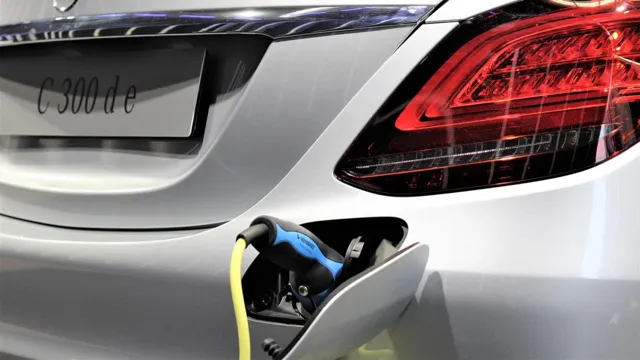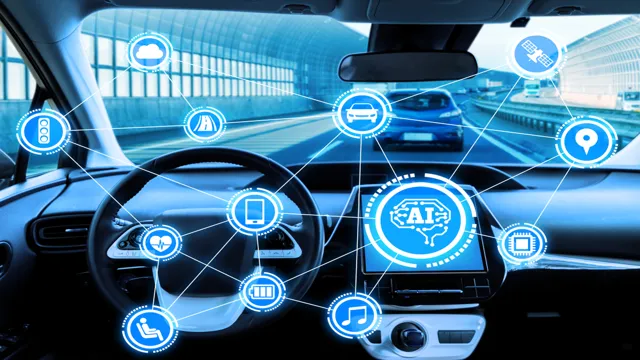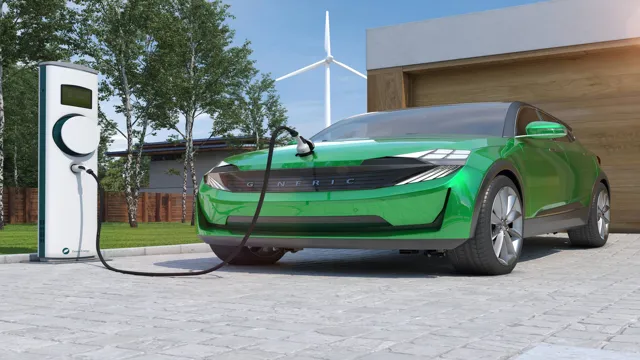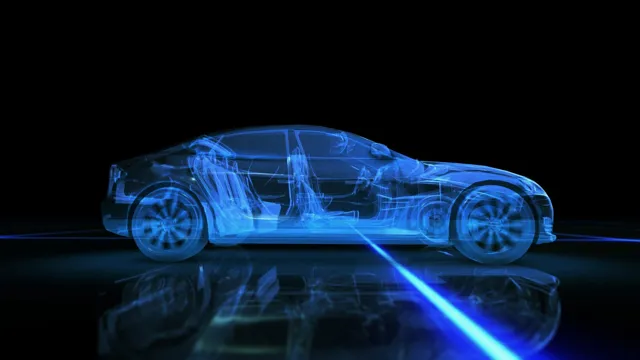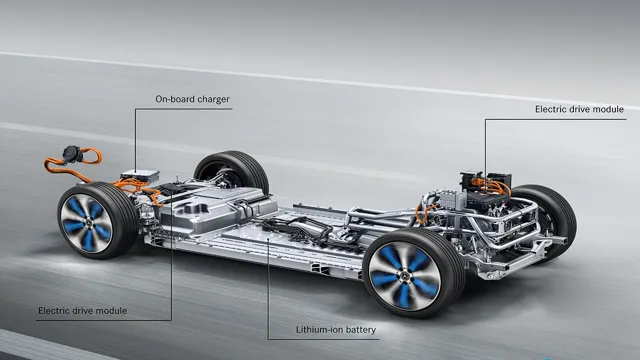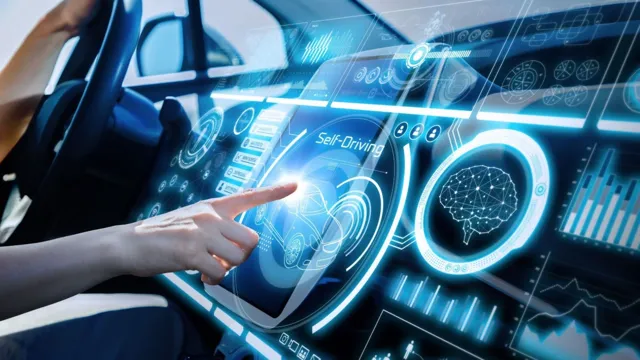Electric Car Revolution: The Battle of Battery Technologies for Dominance
The electric car revolution has been going on for quite some time now. It was only a matter of time before the focus shifted from electric vehicles to a more specific aspect of it: the electric car battery. Ever since the inception of electric cars, one of the main concerns has been the battery life and reliability of the electric car battery.
The battle to manufacture the best electric car battery is one that has been ongoing for a while and has been gaining momentum in recent years. Major car manufacturers and tech giants have been investing billions of dollars into developing the perfect electric car battery that can sustain the vehicle for long-distance trips. The electric car battery battle is not only limited to the longevity of the battery, but also its production cost, safety, and its environmental impact.
It’s crucial to produce electric car batteries that are cost-effective and renewable while reducing the impact on the environment. With increasing competition, multiple companies have come forward with different battery technologies such as solid-state batteries, zinc-air batteries, and lithium-ion batteries. The question now is, which technology will eventually dominate the market? Perhaps the most significant advantage of electric cars is the positive impact they have on the environment.
However, the environmental impact of electric car batteries remains a concern. The production of lithium-ion batteries, which is the leading type of battery being used in electric cars today, requires a considerable amount of energy. This energy consumption translates to a higher amount of carbon emissions, which goes against the very purpose of electric cars.
One of the goals of the electric car battery battle is to find a sustainable, eco-friendly, and cost-effective alternative, which will move us closer to a future of cleaner energy solutions. In conclusion, the electric car battery battle is one that has significant implications for the future of transportation and the environment. As technology gets more advanced, the cost and sustainability of electric car batteries will continue to improve.
The electric car battery battle is an ever-changing landscape, and it will be interesting to see which battery technology will emerge as the market leader.
Overview of the Race
The electric vehicle market is currently dominated by two rival battery technologies – lithium-ion batteries and solid-state batteries. These batteries are crucial in determining the cost, range, and performance of electric vehicles. Currently, lithium-ion batteries are the most popular, but solid-state batteries are gaining traction rapidly.
The main advantage of solid-state batteries is their ability to enhance the range, charging speed, and safety of electric vehicles. On the other hand, lithium-ion batteries are relatively cheaper to produce, making them the preferred battery technology in mass-market electric vehicles. However, the electric vehicle market is expected to grow in the coming years, and manufacturers are investing heavily in developing solid-state battery technology to overcome the limitations of lithium-ion batteries.
The race to dominate the electric car market between these two technologies is intensifying, fueling innovation and advancements in both sectors. In conclusion, the domination of the electric car market by either of these rival battery technologies will depend on their ability to offer efficient, safe, and cost-effective solutions to consumers.
Competition between which battery technologies?
When it comes to batteries, there are a few major players racing to be the top technology. The main competition is among lithium-ion, lead-acid, and nickel-metal hydride batteries. Lithium-ion batteries are currently the most widely used and offer high energy density and fast charging times.
Lead-acid batteries are cheaper and have been around for a long time, but they are bulkier and less efficient. Nickel-metal hydride batteries are considered a middle ground between the two, providing good energy density and affordability. Companies are constantly developing and improving on these technologies to become the preferred choice for consumers.
In the end, the winner of this competition will be the technology that can provide the best combination of performance, cost-effectiveness, and safety for everyday use.
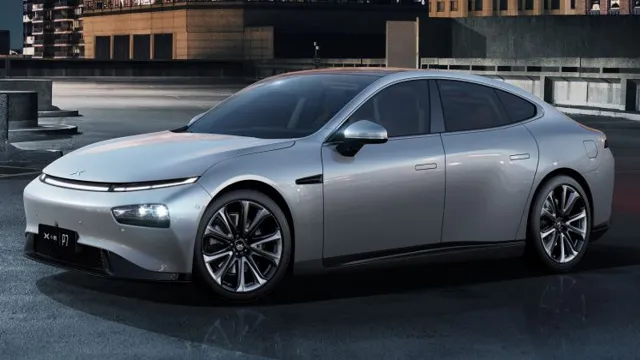
Current state of electric car sales
Electric car sales are on the rise, and it’s safe to say the race for dominance in the market is well underway. With countries like Norway leading the charge in electric car adoption, other players have started to take note and have entered the race as well. In recent years, Tesla has taken the lead in terms of sales and innovation.
However, established car manufacturers like Volkswagen, Ford, and Hyundai are starting to catch up and are making major investments in electric vehicle development and production. Even luxury car brands like Porsche and Audi have entered the market with their own electric car offerings. As more consumers become environmentally conscious, it’s clear that the demand for electric cars will only continue to grow.
The question is, who will come out on top in the race for electric car market share?
Batteries in the Spotlight
As the push towards electric cars continues to gain momentum, the race to dominate the market for efficient and long-lasting batteries also heats up. Two rival technologies have emerged as the frontrunners in the competition: lithium-ion batteries and solid-state batteries. Lithium-ion batteries have long been the most common type of battery used in electric vehicles owing to their proven track record and lower cost.
However, solid-state batteries are now being touted as the future of electric cars thanks to their higher energy density, longer life cycles, and lower risk of catching fire. This is a dynamic situation with both technologies vying for widespread acceptance, and it remains to be seen who will claim the ultimate prize in the electric vehicle space.
Tesla’s use of lithium-ion batteries
As the world shifts towards cleaner and greener energy solutions, Tesla has been at the forefront of the revolution. One of the key components of their electric cars is the lithium-ion batteries that they use. These batteries have revolutionized the car industry by providing a more efficient and environmentally friendly alternative to the traditional combustion engine.
Lithium-ion batteries are lighter, smaller, and can store more energy than standard lead-acid batteries. They are also rechargeable, making them a more cost-effective solution in the long run. This is why Tesla has made the use of lithium-ion batteries a key part of their business model.
In fact, the company has even started producing their own batteries to reduce their reliance on external suppliers. With the demand for electric cars on the rise, the use of lithium-ion batteries will only continue to grow, and Tesla is leading the way towards a cleaner and more sustainable future.
Other contenders: Solid state, flow, and zinc-air technologies
As the demand for longer-lasting, more powerful batteries continues to grow, several emerging contenders in the field are catching the industry’s attention. One such technology is solid-state batteries, which use solid electrolytes instead of liquid, making them more stable and safer than traditional Li-ion batteries. Another promising option is flow batteries, which use tanks of electroactive chemicals to store and release energy.
These batteries can be scaled easily for large-scale energy storage applications, making them a popular choice for use in power grids. Finally, zinc-air batteries are also gaining interest, as they offer high energy density that could rival Li-ion batteries, and are more environmentally friendly. With so many promising technologies on the horizon, the battery industry is poised for significant growth in the coming years, pushing the boundaries of energy storage and powering the next generation of electronic devices and electric vehicles.
Advantages and drawbacks of each technology
When it comes to energy storage technology, batteries are currently in the spotlight. The advantages of batteries are numerous, including their ability to be easily scaled up or down, their quiet operation, and their lack of harmful emissions. Batteries are also becoming increasingly affordable, making them a popular option for both residential and commercial use.
However, there are also some drawbacks to consider. First and foremost, batteries currently have a limited lifespan, which means they will eventually need to be replaced. Additionally, the process of mining and manufacturing batteries can be environmentally damaging.
Despite these drawbacks, batteries remain a promising option for energy storage, and ongoing research is working to improve their lifespan and sustainability. Overall, batteries have the potential to play a critical role in the transition to a more sustainable energy system.
The Economics of the Race
As more people switch to electric cars, it’s clear that batteries are the key defining feature of these vehicles. And the race is on between rival battery technologies to dominate the market. On the one hand, there are nickel-metal hydride batteries, which have been around for decades and have a proven track record.
On the other hand, there are lithium-ion batteries, which are newer and more high-tech, but also more expensive. As with any race, the economics of it all comes into play. Consumers ultimately want affordability, and whichever technology ends up being more cost-effective to produce and maintain will likely end up dominating the market.
But for now, it’s anyone’s game, and both technologies have their proponents and detractors.
Production costs and scalability of each technology
With advancements in technology, the race to sustainable energy has intensified, and each technology has its production costs and scalability. Solar energy is currently the most cost-effective and scalable form of renewable energy. With the development of new materials, it has become cheaper to manufacture photovoltaic cells, and their efficiency has increased significantly.
Wind energy, on the other hand, has higher production costs due to the complex infrastructure required to support the wind turbines. The cost of wind turbines themselves has decreased considerably, but maintenance can be quite expensive. The scalability of wind energy is also more limited than solar energy due to land requirements and local regulations.
Hydroelectric power is an excellent source of renewable energy, but production costs and scalability can be quite high. Dam construction and maintenance are costly, and sites for hydroelectric power plants are limited. Furthermore, the construction of large-scale hydroelectric power plants can have significant environmental impacts.
In conclusion, while all renewable energy sources have their benefits, solar energy appears to be the most cost-effective and scalable option today.
Impact on electric car prices and adoption rates
The economics of the race for electric cars is a topic that has been heavily debated by industry experts. Ultimately, the adoption rates of electric cars will largely depend on the price of these vehicles. Historically, electric cars have been more expensive than their gasoline counterparts due to the cost of manufacturing batteries and other components.
However, as technology continues to advance and production processes become more efficient, the cost of electric cars is expected to drop significantly. This, in turn, will increase the adoption rates of electric cars as they become more accessible to the average consumer. Additionally, government incentives and subsidies can help to further drive down the cost of electric cars, making them even more viable for consumers.
As electric cars become more common on the roads, the infrastructure to support them will also improve, such as an increased number of charging stations.Overall, the affordability of electric cars will continue to be a key factor in their adoption rates moving forward.
Future Implications
As the popularity of electric cars continues to grow, the race to dominate the market with the best battery technology is heating up. Two of the main rival technologies are lithium-ion and solid-state batteries, each with their strengths and weaknesses. While lithium-ion batteries have been the go-to for electric cars for years, solid-state batteries offer faster recharge times, higher energy density, and improved safety.
However, they are still in the early stages of development, and lithium-ion batteries currently dominate the market due to their established infrastructure and lower cost. As both technologies continue to improve, it remains to be seen which one will ultimately become the dominant player in the electric car industry. Regardless of the outcome, the future of electric cars looks bright, with battery technology advancements paving the way for greater efficiency, increased range, and reduced costs.
Potential winners and losers in the race
Future Implications The race for technological advancements has always been a cutthroat one, with companies vying to come out on top. In the case of AI, there are both winners and losers in the pipeline. Companies that don’t integrate AI into their workflows may find themselves lagging behind and not optimizing their resources.
On the other hand, those who embrace AI will gain efficiency and accuracy in their operations, making them leaders in their respective industries. However, a significant downside may be the loss of jobs as AI takes over tasks that were once handled by humans. Experts predict that mainly manual labor jobs will be replaced by AI, leading to potential unemployment.
However, this may pave the way for more skilled jobs in the AI industry, such as AI engineers and machine learning specialists. In conclusion, the move towards AI technology is inevitable, and those who embrace it will undoubtedly benefit in the long run.
Impact on the environment and energy dependence
The future implications of our dependence on non-renewable energy sources are clear in terms of environmental impact and energy security. The continued use of fossil fuels has reached a critical point, resulting in rising CO2 levels, global warming, and other environmental problems. Renewable energy sources, such as solar and wind power, are becoming more competitive, and many countries and corporations are making a significant transition to renewable energy production.
This trend toward renewable energy is expected to continue as the cost of renewable energy technologies decreases and environmental concerns increase. Ultimately, reducing our dependence on non-renewable energy sources will improve air quality, reduce climate change, and create new job opportunities in the renewable energy sector. By investing in renewable energy, we can create a better future for ourselves and the planet.
What this means for the future of transportation
The developments in autonomous technology have enormous implications for the future of transportation. We can expect to see a significant reduction in accidents, traffic congestion, and pollution. With self-driving cars becoming more common, the roads will become safer and more efficient.
Also, we can see the reduction in the need for large parking lots and garages, freeing up valuable space in cities and suburbs. There will be a shift in the way we view transportation, with more emphasis on ride-sharing and public transportation. The future of transportation is looking bright, and it is up to us to adapt to the changes that are coming.
Conclusion
In the race to dominate the electric car market, rival battery technologies are sprinting towards the finish line. It’s a battle between fast charging and long-range, between affordability and sustainability, between conventional and unconventional. However, the ultimate winner will be the one that strikes the perfect balance between all of these factors.
The car battery market is a marathon, not a sprint, and the true champion will be the technology that can go the distance, providing reliable, efficient, and environmentally friendly power for generations to come.”
FAQs
What are the different battery technologies currently being used in electric cars?
The two main rival battery technologies in the electric car market are lithium-ion and nickel-metal hydride. However, there are also other emerging technologies such as solid-state batteries and flow batteries.
Which car manufacturers are leading the race to dominate the electric car market?
Tesla, General Motors, Nissan, and Toyota are among the major players in the electric car market. However, there are also many smaller manufacturers such as BYD, Lucid Motors, and Rivian that are gaining traction.
What is the current state of electric car battery technology?
Electric car battery technology is rapidly advancing, with research and development focused on improving the energy density, charging time, and lifespan of batteries. This is essential to meet the increasing demand for electric vehicles and make them more competitive with traditional gasoline-powered cars.
What are the environmental benefits of electric cars compared to traditional cars?
Electric cars have a much lower carbon footprint than traditional cars, as they emit zero greenhouse gases from the tailpipe. They also reduce air pollution and dependency on fossil fuels, leading to a cleaner and more sustainable transportation system.
